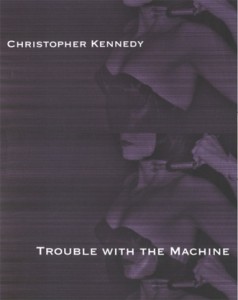Gagaku Meat and Influence
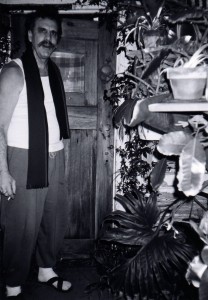
(Photo of Steve Richmond by Mike Daily, 1993)
A couple of weeks ago, Portland writer Mike Daily sent me a copy of a bound essay entitled Gagaku Meat: The Steve Richmond Story. It’s a hell of a thing, actually.
Daily discovered Richmond through the work of Charles Bukowski. They were (Richmond and Bukowski) on-again, off-again friends and fellow practioners of what some call the Meat School of poetry—masculine, direct, sometimes down on its luck. And where Richmond seems to have been influenced by Bukowski, Daily seems influenced by Richmond. Legacy. READ MORE >
Influences 5: Sasha Fletcher

Here is the fifth response to my influences post. The respondent is Sasha Fletcher.
Prompts:
1) Pick one of the pieces you chose and describe the thing about it that seems particularly innovative about it.
2) Tell me what changed about your writing because of that innovation.
Answers after the jump: READ MORE >
Influences 4: Shya Scanlon
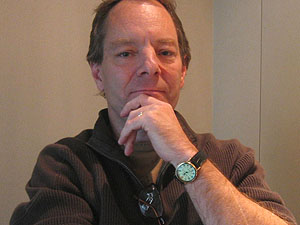
Here is the fourth response to my influences post. The respondent is my friend Shya Scanlon. Read “The Fish” on Spork.
Prompts:
1) Pick one of the pieces you chose and describe the thing about it that seems particularly innovative about it.
2) Tell me what changed about your writing because of that innovation.
Answers after the jump: READ MORE >
Influences 3: Nathan Tyree
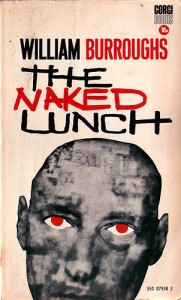
And now the third response to my influences post. The subject is Nathan Tyree.
1) Pick one of the pieces you chose and describe the thing about it that seems particularly innovative about it.
2) Tell me what changed about your writing because of that innovation.
Here are his responses:
1) Naked Lunch was the first thing I read that was truly experimental. I was sixteen, and all the novels I had read followed the same rules, the same strictures of what a novel was. Burroughs seemed to be saying “fuck the novel”, he seemed to be spitting in in they eye of society. Naked Lunch wasn’t a novel; it was an insult- a savage cry. Everything I read after that had to be seen through a different, distorted lens.
2) I stopped being afraid. NL made me realize that you learn the rules so that you can break them with glee.
Influences 2: Gabriel Blackwell
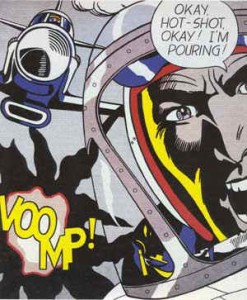
This is the second follow up to my “Let’s make a list,” art influences post. I asked Gabriel Blackwell to respond to these two prompts:
1) Pick one of the pieces you chose and describe the thing about it that seems particularly innovative about it.
2) Tell me what changed about your writing because of that innovation.
Here are his answers:
1) Roy Lichtenstein’s appropriation of Jack Kirby and Kirby-esque comic panels very nearly manages to carry us into the hip-hop age single-handedly. Yes, there are of course Duchamp, Warhol, and Lichtenstein’s other Pop Art contemporaries, but, for me at least, no one is quite so honest and unapologetic about the act of choice being the most important (so important that it can stand on its own) technique in the creation of art—and the subsequent ethic of recycling—as is Lichtenstein.
2) My mother and one of my older brothers are visual artists, and I was dragged—literally, by the arm—into a lot of museums and galleries as a kid. I probably hadn’t started writing yet, so I don’t think it would be fair to say that anything “changed” as a result. But I think that seeing Lichtenstein, in that context and at that age, permanently affected the way that I think of art—all art, including writing. The first story I can remember writing, when I was in 4th grade (so around the same time that my family and I went to MoMA and I first saw Lichtenstein’s appropriations), won first prize in my elementary school’s writing contest. A week later, the prize was stripped from me when it was discovered that I had lifted part of the premise of my story from Daniel Manus Pinkwater’s “Fat Men From Space.” I didn’t see anything wrong with it then, and I still don’t now.
ALSO:
Follow this link to Gabe’s blog and you’ll find a bit from a Paris Review interview with William Burroughs on cut-ups.
Influences: Ken Baumann
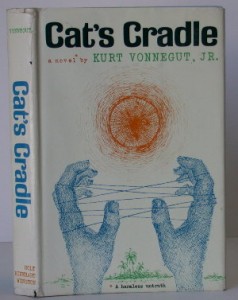
Here’s the way we will be following up on my earlier “Name a piece of art that changed the way you thought about art” post here. If you responded, I will try to contact you about you choices with a mini interview.
First up, our friend and colleague Ken Baumann.
Here are the questions:
1) Pick one of the pieces you chose and describe the thing about it that seems particularly innovative about it.
2) Tell me what changed about your writing because of that innovation.
Here are Ken’s answers. Ken chose to talk about both his selections.
What seems innovative about 2001? Incredible technical achievement aside, 2001: A Space Odyssey is, to me, the perfect example of the power of cinema, especially that of primarily non-verbal storytelling. I’d say my experience with that movie fundamentally changed the way I viewed storytelling, and has informed my taste and practice in all realms of art.
What seems innovative about Cat’s Cradle? That was the first book I read that affected and strongly shaped my belief system. I hope the book is eternally regarded as innovative, in that it, to me, captured perfectly the sorrow and longing and absurdity and fractured nature of human experience.
Literature Map: Fun for 5 minutes
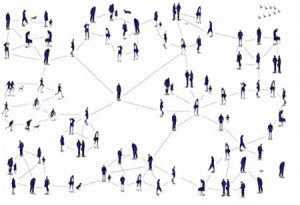
I don’t know how scientific this is, but the results keep on moving and makes me feel it’s alive. Put in an author’s name and poof!
I put in Rick Moody (that Moody guy), Gore Vidal (that old guy), and Mishima (that guy who stabbed himself the Japanese way) and I was like, “Yah, seems about right.”
Then I put in “your mom,” and was like, “what the fuck.”

